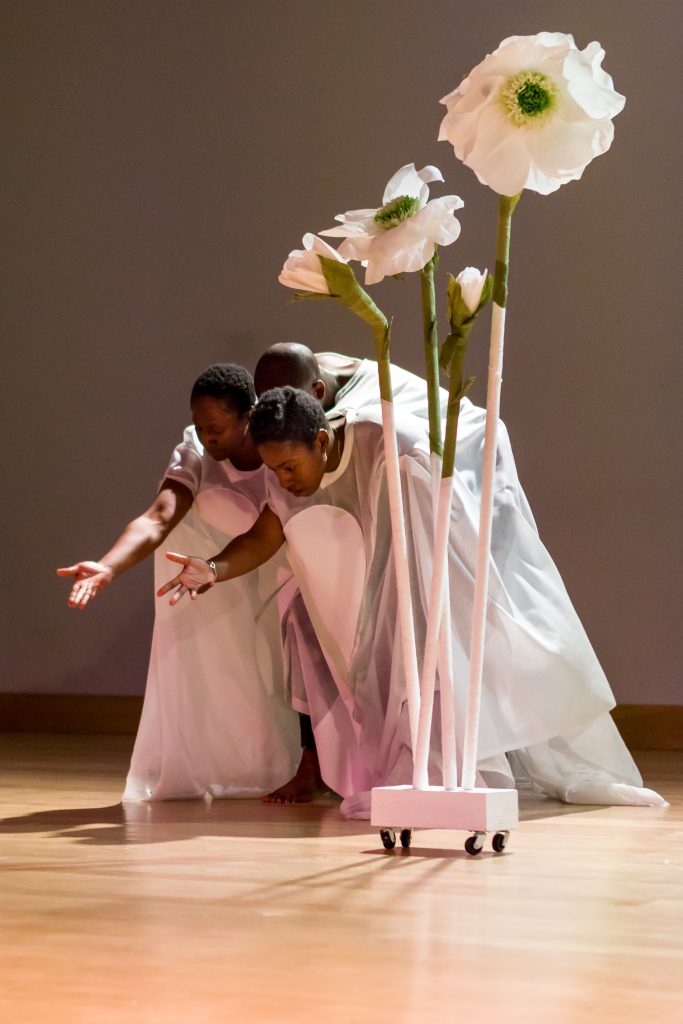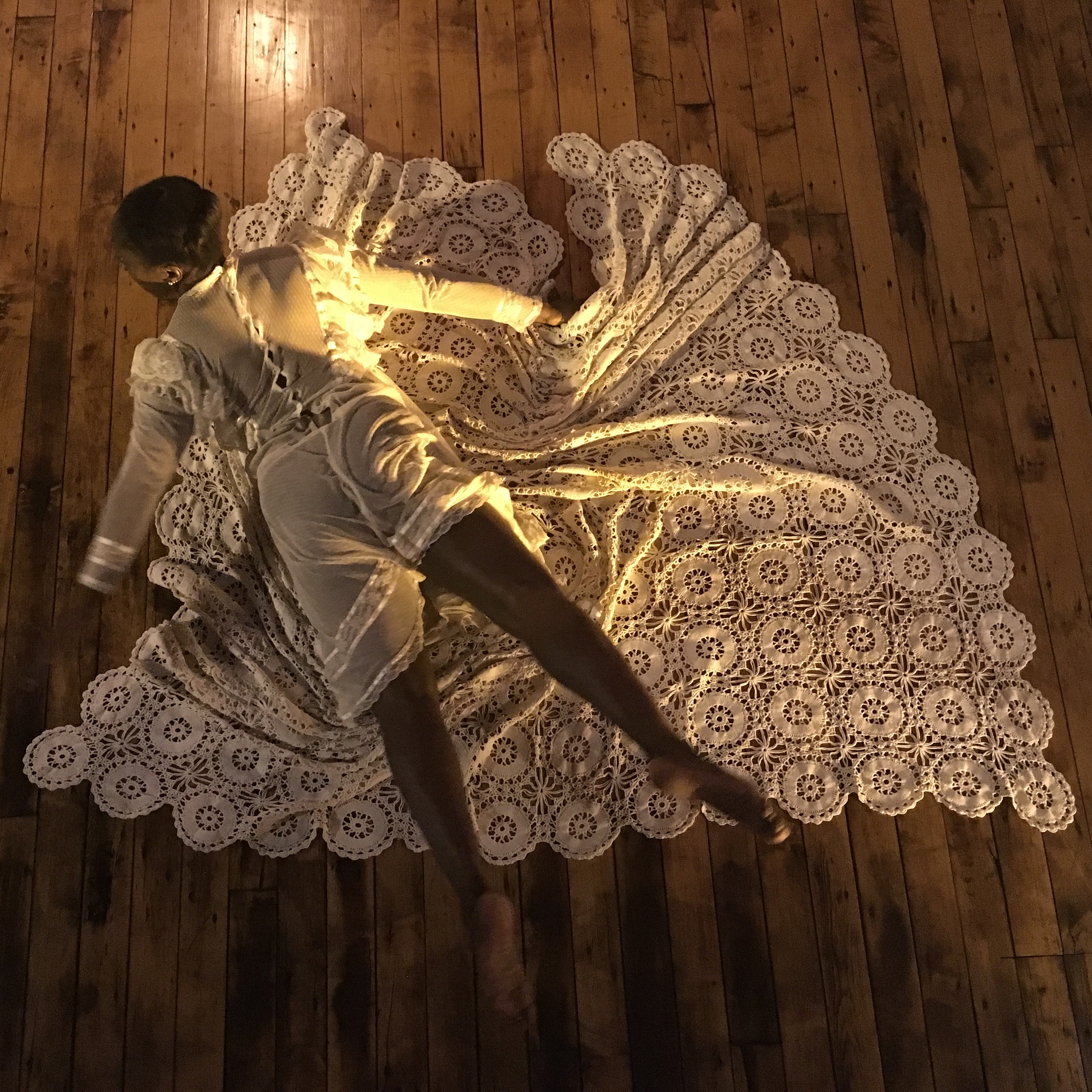 bio
bio
Deborah Goffe is a dance maker, performer, educator, and performance curator who cultivates environments and experiences through choreographic, design and social processes. She is driven by an enduring commitment to world making, support of vibrant local dance ecologies, and the role of curatorial practice in those processes. Since its founding in 2002, Scapegoat Garden has functioned as her primary vehicle for artistic and curatorial practice—a means to forge relationships between artists and communities, helping people see, create and contribute to a greater vision of ourselves, each other, and the places we call home.
Deborah’s performance works have been performed in homes, gardens, galleries, and regional, national, and international venues, including: ICA Boston, Boston Center for the Arts, Center for the Arts at Wesleyan University, Wadsworth Atheneum, Real Art Ways, the International Festival of Arts and Ideas, New Haven, Bates Dance Festival, Provincetown Dance Festival, New York Live Arts, Dance New Amsterdam, DUMBO Dance Festival, Artists of Tomorrow Theatre Festival, and the 92nd Street Y. Deborah’s choreographic work has also been performed internationally in Finland, Italy and Cape Verde. She is a 2022 Creative Capital Awardee for her current project, Liturgy|Order|Bridge, and has received artist fellowships and grants from New England Foundation for the Arts, Massachusetts Cultural Council, Connecticut Office of the Arts, the Greater Hartford Arts Council, the Surdna Foundation. She has been honored for Lifetime Achievement by the Greater Hartford Arts Council and Distinguished Achievement in Dance by the Connecticut Dance Alliance. Deborah is a recent member of the New England Foundation for the Arts Regional Dance Development Initiative (RDDI) New England Now cohort and a Pillow Lab Residency artist at Jacob’s Pillow. She has participated as a New England Emerging Choreographer at the Bates Dance Festival and as a yearlong Artist-in-Residence at Billings Forge Community Works.
Deborah’s work in support of local arts ecosystems parallels and weaves through her artistic practice. Examples of that work includes her founding of The Garden for Contemporary Dance (an alternative performance venue and incubator space for Hartford-area dance makers to develop and share new work from 2011-2014. She also served as Dance Coordinator at Charter Oak Cultural Center (2011-2012), working closely with Hartford-area dance-makers to strengthen networks and establish shared resources within her local dance community through the formation of the Homegrown Dance initiative. A graduate of the University of the Arts (BFA, Modern Dance) and California Institute of the Arts (MFA, Dance Performance and Choreography), Deborah also earned an MA in Performance Curation from the Institute for Curatorial Practice in Performance (ICPP) at Wesleyan University. Her thesis work, Orienting Ourselves To See: Mapping Nested Dance Ecosystems as Curatorial Practice in New England, attends to the intersection of sustainable dance practice, locality, arts ecosystem formation, habits of perception, and black radical tradition(s) as an urgent form of curatorial practice. She was also a 2019 ICPP Ford Leadership Fellow, and served as lead author and consultant on the ICPP Performing Artist Case Study project, funded by the Doris Duke Charitable Foundation.
These concerns form a foundation for her work at Trinity College in Hartford, CT where she currently serves as Executive Director of the Austin Arts Center and Artist-in-Residence in Theater and Dance. Prior to her position at Trinity, she taught in a several institutions, including California Institute of the Arts (graduate student teaching fellow); Wesleyan University; CREC Center for Creative Youth; CulturArte—a youth arts summer residency program in Cape Verde, Africa; as core faculty member in the dance department at CREC Greater Hartford Academy of the Arts; and as Associate Professor of Dance and Performance Curation at Hampshire College in Amherst, Massachusetts.
click here to view Deborah’s curriculum vitae
artist statement

(2023)
In my early adulthood, when much of my life was shaped by an all-encompassing faith, I often referred (cheekily) to my choreographic work as “postmodern liturgical dance.” Through dancemaking, I studied, contemplated, reconciled, and rehearsed the contradictions religious texts and ritual knit together in me. Dance and faith communities both held potential to open portals through which the world could be simultaneously cast aside, imagined anew, and navigated together, even as my philosophical eclecticism and unwavering reverence for artistic processes sometimes stood at odds with my faith community’s orthodoxy.
Since then, I’ve come to recognize performance itself as my faith practice. It is expressed in my work to facilitate experiences, build environments, nurture our ability to see each other, and make visible how we relate to one another. This work provides a space for thinking and moving together, for making sense of the world somehow, and for attending to our interdependence. This moving together can implicate both dancing and the kinds of mobility we all need in order to shift perspective. Perhaps, as a result of this exchange, we are better equipped to co-create the worlds of care—the multitude of creation myths—we need at this moment. I am finding that performance making helps me test and stretch my faith in us—in our bodies’ capacities to both hold and heal.
I have satisfied these impulses by convening other local, regional, and international artists in choreographic, design, social and interdisciplinary collaborative processes that have unfolded iteratively over a period of years. In centering my own body in solo work for periods of time, I have learned to activate the tensions between easeful calligraphic flourish, deep muscular grounding, inherited legacies, continued introspection, and the evolving discernment of age. This work has necessarily informed the ways I facilitate movement practice among groups. Whether moving alone or in group-body, I seek connectivity within and across bodily presences, institutional and geographic borders, disciplines and perspectives. I am concerned with hospitality, multi-sensoriality, and increasingly explicit—though circuitous—relationships to Black aesthetics in layered assemblages.
These assemblages are worlds crafted from movement, text, soundscapes, conversation, clothing, food, and objects built by hand. Luminescent bundles of human-scale paper flowers. A tuberous sculpture crafted from antique doilies, birdcages, and light as a sublimation of black girls’ fibroid tumors. A ghostly reimagining of the pillory I encountered among Cape Verdean ruins in the old city that was erected to serve enslavement hundreds of years earlier. Mapped video projections of bathroom-floor-rituals that reconcile me to a series of traumatic experiences in bathrooms on two continents. Sound recordings of crackling glue breaking free from latex surfaces. A melodic phrase that has been caught in my throat since that song class I took in college. Heartfelt invitation letters to gather and eat with me in my home to witness a dance. Invitations to rise in visions of togetherness where performance space functions as sacred social space, and personal space functions as performance space. Through my own care-full frame setting, I am learning to bridge the gap between performer and witness, public and private—closing the distance between without conflating them.





